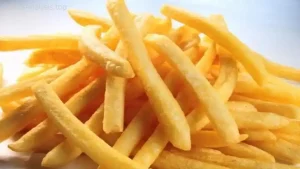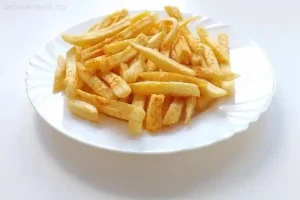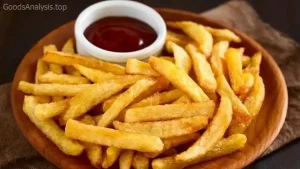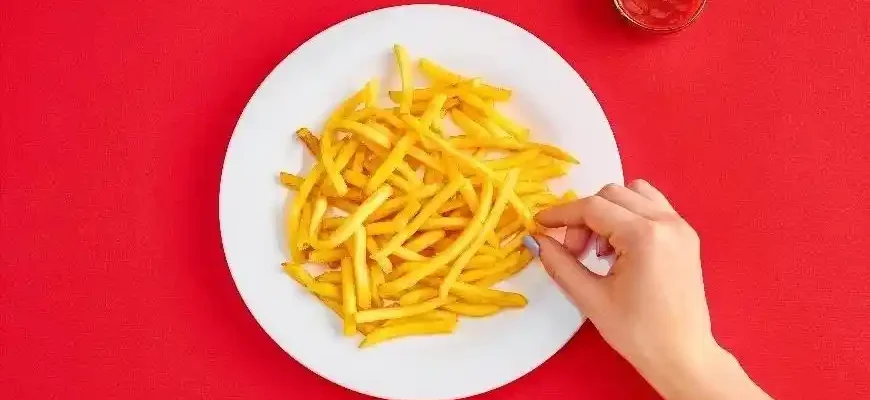Ah, French fries! The humble potato, sliced into thin strips and deep-fried to perfection—crunchy on the outside, soft on the inside, and universally loved by people of all ages across the globe. Whether you’re sitting in a diner, at a fast-food joint, or making them yourself at home, French fries have an undeniable charm. But how exactly do you make the perfect French fries? It’s not as simple as tossing some potatoes in hot oil. There’s technique, timing, and a little science involved. Let’s dive in.
The Basics of French Fries: A Brief Overview
At its core, making French fries is about transforming raw potatoes into a delicious, crispy snack. The process involves three key steps:
- Cutting the Potatoes
- Soaking the Potato Sticks
- Frying the Potatoes
But of course, it’s not that straightforward. There are a variety of approaches and methods, and the difference between good fries and great fries often comes down to these little details. So, let’s break it down.
Step 1: Choosing the Right Potatoes
Not all potatoes are created equal. When it comes to making French fries, some potatoes are better than others. The best varieties are those with a high starch content, such as:
- Russet Burbank potatoes – Known for their high starch content and fluffy interior, they’re often considered the gold standard for fries.
- Yukon Gold potatoes – These have a bit more waxy texture and can give fries a creamier inside, though they’re not always as crisp as Russets.

Avoid using waxy potatoes like Red Bliss or new potatoes, as they tend to become mushy and don’t hold their shape well when fried.
Step 2: Cutting the Potatoes
Here’s where things get a little tricky. How thick should the fries be? Should they be thin-cut or thick-cut? The answer depends on personal preference. But keep in mind that:
- Thick fries (also called steak fries) take longer to cook and can be fluffier on the inside.
- Thin fries, on the other hand, crisp up faster and have a more uniform crunch.
Here’s a simple rule of thumb: if you’re aiming for crispy fries with a soft interior, cutting them into even, medium-thick strips (about 1/4 inch wide) is a good balance. Too thick, and they won’t crisp up well. Too thin, and they might burn.
Step 3: Soaking the Potatoes
Soaking the cut potatoes in cold water for at least 30 minutes (or even overnight) serves two important purposes:
- Removes excess starch: This helps the fries become crispy when fried, instead of sticking together or becoming too gummy.
- Helps maintain their structure: Soaking reduces the chance of fries breaking apart during cooking.

You can soak them in a bowl of water or even add a pinch of salt to the water for a bit of flavor infusion.
Step 4: The Double-Fry Method
Here’s the key to making fries that are perfectly crispy on the outside and soft on the inside: double frying. This technique involves two rounds of frying:
- First fry (blanching): Heat your oil to around 325°F (165°C) and fry the potatoes for about 3-5 minutes. This step cooks them through without browning them too much. The goal is to cook the insides.
- Second fry (crispy finish): After letting the fries cool down for a few minutes, increase the oil temperature to 375°F (190°C) and fry them again until golden and crispy. This step gives the fries that perfect crispiness on the outside.
Step 5: The Right Oil and Temperature
Speaking of oil, you’ll want to choose one that can handle high heat. Peanut oil is often considered the best because it has a high smoke point and imparts a neutral flavor. However, vegetable oil or canola oil are also perfectly acceptable.
As for temperature: Frying at the correct temperature is crucial. Too hot, and the fries will burn on the outside without cooking through. Too cold, and they’ll absorb too much oil and become greasy.

Step 6: Seasoning Your Fries
After your fries come out of the fryer, they should be seasoned immediately while they’re still hot. Salt is the classic choice, but you can get creative:
- Garlic powder, onion powder, and a little paprika can add depth of flavor.
- For a more indulgent twist, try sprinkling them with parmesan cheese or fresh herbs like parsley.
- Truffle oil or a drizzle of vinegar can elevate your fries to gourmet status.
Step 7: Serving Suggestions
French fries are rarely eaten alone. They pair wonderfully with:
- Ketchup, mayonnaise, or even aioli.
- Cheese curds and gravy for a classic poutine (if you’re in Canada or feeling adventurous).
- Bacon bits, cheddar, and even a little chili for a loaded fry option.

The possibilities are endless.
Health Considerations: Are French Fries Bad for You?
Now, let’s get to the elephant in the room: Are French fries bad for your health?
Unfortunately, yes and no. Here’s the truth:
- High in Calories and Fat: If you deep-fry them, fries can pack a lot of calories, especially if you use too much oil or deep-fry them multiple times. A small serving can easily exceed 300 calories, and larger portions can push 600-800 calories.
- Acrylamide Risk: When potatoes are cooked at high temperatures, especially frying, a chemical called acrylamide can form. This substance has been linked to cancer in animal studies. While the risk to humans is still being researched, moderation is key.
So, what can you do? A few suggestions:
- Use healthier oils, like olive oil (though it has a lower smoke point, so be careful).
- Bake instead of frying: Baked fries can still be crispy and are lower in fat.
- Air fryers are a great alternative, using minimal oil for a similar crispy texture.

If you enjoy French fries, it’s fine to indulge now and then, but like everything, balance is the key.
Real-Life Opinions on French Fries
Now that we’ve explored the ins and outs of French fries, let’s see what people from around the world have to say about this beloved dish.
- Carlos (Mexico, Age 30): “For me, fries are a perfect side to almost any dish. But I can’t handle them too greasy. I always opt for thin fries and dip them in salsa. That’s how we do it in Mexico!”
- Julia (USA, Age 45): “I used to think making fries was just about throwing them in oil. After learning about the double fry method, I can’t go back. It’s the secret to crispy fries!”
- Akira (Japan, Age 60): “In Japan, we make fries with a light touch—nothing too heavy. I prefer them served with a sprinkle of seaweed and sesame seeds. It’s a fun twist!”
- Tanya (Russia, Age 22): “Fries are my guilty pleasure. The crispier, the better. And please, don’t forget the ketchup. It’s the best combo.”
- David (UK, Age 70): “I’ve eaten my fair share of chips over the years, but honestly, I think there’s a fine line between crispy and burnt. If you can find that balance, you’ve got a good fry.”
Conclusion
French fries are more than just a snack; they’re a cultural staple and a versatile treat. Whether you’re frying them at home or grabbing them from your favorite fast-food chain, knowing how to make them properly can turn this simple dish into a masterpiece. While they’re delicious, it’s important to be aware of the health risks and make adjustments where necessary. Don’t be afraid to experiment with different methods and seasonings to find your ideal fry.
And remember—don’t take fries too seriously. After all, they’re just potatoes. But oh, how wonderful they are!









